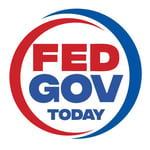Original broadcast 6/1/25
Presented by Maximus
The Government Accountability Office (GAO) has once again spotlighted a significant opportunity for federal agencies to boost operational efficiency and reduce waste. In the latest edition of Fed Gov Today, Jessica Lucas-Judy, Director of Strategic Issues at GAO, details how the agency has identified a staggering $100 billion in potential savings through improved coordination and reduction in duplication, fragmentation, and overlap across federal programs.
Lucas-Judy begins by distinguishing the often-confused concepts of fragmentation, overlap, and duplication. Fragmentation occurs when multiple agencies or offices within an agency work independently toward a common goal without coordination. Overlap is defined as multiple agencies offering similar services to similar populations, while duplication refers to different agencies delivering the exact same services to the same beneficiaries. While these conditions are not automatically problematic, they become significant when they create inefficiencies, confusion, and unclear lines of accountability.
Over the past 15 years, GAO has produced an annual report that aggregates its findings and recommendations on these issues. To date, the office has issued more than 2,000 recommendations, and agencies and Congress have addressed or partially addressed more than three-quarters of them. These recommendations consistently highlight the importance of clearer stakeholder roles, inter-agency communication, accountability mechanisms, and measurable outcomes.
 Lucas-Judy points out that many agencies claim they are coordinating, but in practice, their efforts are often undocumented and unsustainable. “If one person leaves,” she notes, “you don’t have that kind of continuity.” She cites examples from this year’s report, including issues in interagency training programs where differing terminology and goals created operational disconnects.
Lucas-Judy points out that many agencies claim they are coordinating, but in practice, their efforts are often undocumented and unsustainable. “If one person leaves,” she notes, “you don’t have that kind of continuity.” She cites examples from this year’s report, including issues in interagency training programs where differing terminology and goals created operational disconnects.
The report also identifies significant cost-saving opportunities beyond the elimination of overlap and duplication. One such recommendation — which has appeared in several previous reports — involves equalizing Medicare payments across service settings. Whether a procedure is performed in a hospital outpatient facility or a doctor’s office, Lucas-Judy says, it’s often the same service performed by the same provider. Yet the payment rates differ. Addressing this inconsistency could save over $150 billion, according to the Congressional Budget Office.
Most GAO recommendations are directed at the agencies themselves and can be implemented without new legislation. However, some recommendations, such as Medicare payment reform, require Congressional action. Lucas-Judy emphasizes that while fewer in number, those Congressional recommendations tend to be the highest-impact in terms of potential savings.
GAO follows up on its recommendations throughout the year — not just annually. The agency requires documented evidence from departments claiming implementation, rather than relying on promises or plans. The Comptroller General also sends annual letters to agency heads identifying high-priority recommendations that warrant personal attention from agency leadership.
Looking ahead, Lucas-Judy is already planning for GAO’s 16th report. While she expresses hope that duplication and inefficiency will decline over time, she acknowledges that new problems and opportunities for savings continually emerge. As she puts it, “each year we do continue to find ways that agencies can work together better.”
Key Takeaways:
-
GAO estimates $100B in potential savings through better coordination and reduced duplication.
-
Over 75% of GAO’s 2,000+ recommendations have been implemented or partially addressed.
-
Medicare payment equalization alone could save more than $150B if Congress takes action.

